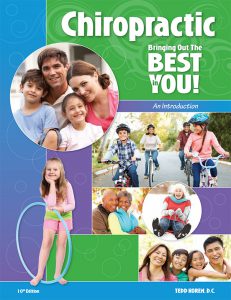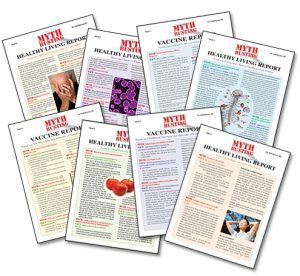An Amish Story
Nearly 200 years ago, the Amish emigrated from Switzerland and Southern Germany to the Lancaster, Pennsylvania area. As with many others drawn to the “Golden Land”, in America they found freedom from persecution, tolerance for their pacifism and religious beliefs, and opportunity.
With an average number of seven children per household, there just wasn’t enough land for all the children to stay on the family farms in Pennsylvania and the Amish have since spread out to Ohio, Wisconsin, Iowa, Illinois, Indiana and many other states.
They are hardworking, doing mostly manual labor such as carpentry and farming. They live by the Biblical injunction to be a “people apart.” And they live apart from others in time as well as in space.
The Amish home and lifestyle seem frozen in the 18th century – they eschew cars, electricity and telephones and other things. Their homes and grounds are well kept. I’ve found them to be peaceful, polite, honest and appreciative.
Though they live apart, they interact with us “English” (non- Amish) in their work and for their family health care. They prefer natural healthcare and gravitate towards herbal medicine, homeopathy, naturopathy and chiropractic. That’s where I come in.
Every Month
Every month, I go to “Amishland.” Driving around the area, it’s hard not to stop at stands selling vegetables, fruits, berries, root beer, pumpkins, gourds and other products. And let’s not forget Amish quilts.
The Amish heard about my work and word spreads fast in their community. They would often come to me by taxi (passing over a hundred chiropractors) to my office. But the taxi was expensive; it was hard taking time off and, after numerous requests, I agreed to come to them.
They like KST (Koren Specific Technique) and, as long as I can hook up a generator or inverter to my ArthroStim adjusting instrument I can work on them. The extra bonus is that I come home with fresh raw milk, cream and butter from grass fed Jersey cows, eggs from free-range chickens and other farm and homegrown products.
I Was Tired
It was a long day seeing patients. I was tired and looking forward to beginning my 75-minute drive home. I was going to be late for dinner. But then one of my patients asked if I’d see her husband who had a stroke a few days prior. “He’s in a hospital bed in the living room. Can you come by when you finish here?”
Stroke Victims
Stroke victims need immediate care. Homeopaths, acupuncturists and others know that you need to work on them as soon as it is safe to do so, before unhealthy patterns set in.
How could I say no? As the last of my patients drove away in their horse powered buggy, I plopped down into my horseless carriage to drive two or so miles down Route 10 to a large, well kept home surrounded by neatly manicured lawns.
I walked into a scene reminiscent of a Dutch masters painting. About twenty Amish men and women were sitting around the patient’s bed, all chatting in Dutch (really a middle German, similar to Yiddish). They are called the Pennsylvania Dutch but Pennsylvania Deutch (German) would be more appropriate.
Abner was about 75-years-old with a long white beard. He was alert and pleasant but, under his smile, I could see his concern. His right side was paralyzed. He couldn’t move his arm or leg. He couldn’t walk at all.
Almost everyone excused himself or herself into another part of the house. The Amish like privacy when they are being doctored.
Surrogate Work
I use a binary biofeedback device to check patients. The most well known is muscle testing as used by applied kinesiology (AK). Other such devices include the short leg reflex (Van Rumpt/Truscott) and the sweat reflex (Toftness). There are many more. I prefer the occipital drop (OD), as discovered by Lowell Ward, D.C., because, unlike AK, there is no muscle fatigue and it can be applied in many creative ways, as we’ll soon see.
Because my patient was lying on his back, I couldn’t use his occipital drop (OD) to get information. So, what was I to do? I did surrogate work. I used my own occipital drop as a binary (“yes-no”) device to quickly locate his subluxations. I was a surrogate for my patient.
Adjusting
So, I’m checking my OD to locate his subluxations. For those who have a hard time understanding this, imagine that you can muscle test yourself.
You may be thinking, “Are patients OK with this?” My answer is that, as long as you are OK with it, the patient is OK with it.
Is surrogate adjusting weird? It’s a lot less weird than making a person lie unconscious on a table, cutting them open and doing things to their insides, yet that goes on all the time without question. How we deal with healing is cultural.
Back to Abner. As expected, his cranial bones were subluxated. More specifically, his left and right sphenoid wings were anterior, his occiput was inferior and right lateral, his frontal was right lateral and his right temporal bone was anterior and superior. His left and right zygomatic arches and points around his orbit were also involved. His Atlas (C-1) had a Blair list- ing and his hyoid (which can affect speech and swallowing) was anterior.
Most interesting was that his head “bumps” needed adjusting. No head is perfectly smooth and sometimes cranial bumps and ridges need correcting. I’ve especially noticed this in trauma victims, in those suffering from depression, and among those with learning disorders, but was not surprised to find it in a stroke victim. In addition, his sternum was superior, in a panic (fight or flight) pattern, which should come as no surprise.
The adjustments were performed quickly and easily. There was no twisting or cracking, I just gently touched the ArthroStim (you can use any adjusting instrument, although I prefer the ArthroStim) to the segments in question at the proper line of drive and pressed the button for a fraction of a second. It’s so gentle that sleeping children can be adjusted without awakening them. Abner’s post check revealed the subluxations were corrected and his body wanted no more. We should never over-adjust.
After the adjustments, he made an announcement to all of us. “Look, I can now lift my right leg.”
The Dental Connection
As I’m checking and adjusting, I find a dental problem. “Where is the dental problem?” I ask the body. “Upper jaw? Lower jaw? Right quadrant? Left quadrant?” I get the quadrant and locate a bad tooth.
It is always important to check for dental issues, especially when someone has a serious, sudden illness. I asked Abner, “Did you have any recent dental work, especially any extrac- tions or root canals.”
“Yes, I did,” he said. “A few months ago, I had a root canal done. I never had one before. The dentist said there was an infection.” Abner continued, “I asked him if he was going to clean out the infection under the tooth before he did the root canal and he said, ‘No, it doesn’t matter.’ I had a bad feeling about that.”
Sometimes, it’s best to go with your feelings.
Infected root canals have been linked to stroke, cancer (especially breast cancer, lymphoma and leukemia), heart attacks, multiple sclerosis (MS), Lou Gehrig’s Disease (ALS), depression, rheumatoid arthritis and many other conditions. It usually takes a few months for the effects to be noticed, but they can be devastating. People can go from robust health to severe incapacity a few weeks or months after a root canal.
In fact, the only case of MS I ever saw in an Amish occurred a few months after she had a root canal. Good books on this subject are The Root Canal Cover-up by George Meinig and books by Hal Huggins on dentistry.
I recommended that Abner get that tooth pulled immediately. Bad root canals need to be pulled and replaced with a bridge or an implant. Research indicates that in time the majority of root canals become infected.
Bridges are less invasive but, recently, a new material was approved for implants that is apparently safer than what had been used.
Amish e-mail
Amish e-mail does not exist. The closest I’ve come to it is an Amish farmer named Enoch who likes to gossip a lot. The Amish don’t have computers.They may have a phone in the barn or the shop, so it’s a little tricky hearing from them.
However, I did receive a phone message two days later: “Dr. Koren, this is Sadie, Abner’s wife. Thank you so much for coming over. Abner is improving. He felt so much better the next morning after you were here. He took a couple of steps this morning. His right hand is doing really good, his hand and arm. If you can come over again and give him another adjustment, we’d be really, really glad; it’d do him a lot of good. Thanks again for coming.”
I hope to return soon. Why did I write this? This little story has a lot of different elements I’ve wanted to write about for a while: my visits to the Amish using KST, binary biofeedback devices, working on a stroke victim, surrogate adjusting and dental information. My experience a few nights ago put it all together.
Tedd Koren, D.C., is the developer of Koren Specific Technique. For information, go to www.korenspecifictechnique. com. Dr. Koren also writes patient education materials. Go to www.korenpublications.com. Dr. Koren can be reached at tkoren1@aol.com.
To locate a holistic or biological dentist in your area: http://mercuryfreedentists.com http://www.iaomt.org TAC
Tedd Koren, D.C.
Chiropractic: Bringing Out The Best In You! 10th Edition
Increase retention and referrals by educating your patients – they’ll value your care, stay in care and refer others! We’ve…
More InfoMyth Busting Reports – Value Pricing Set
We do the research. You teach your patients. When you are asked about these hot topics, you’ll have ready answers…
More Info

